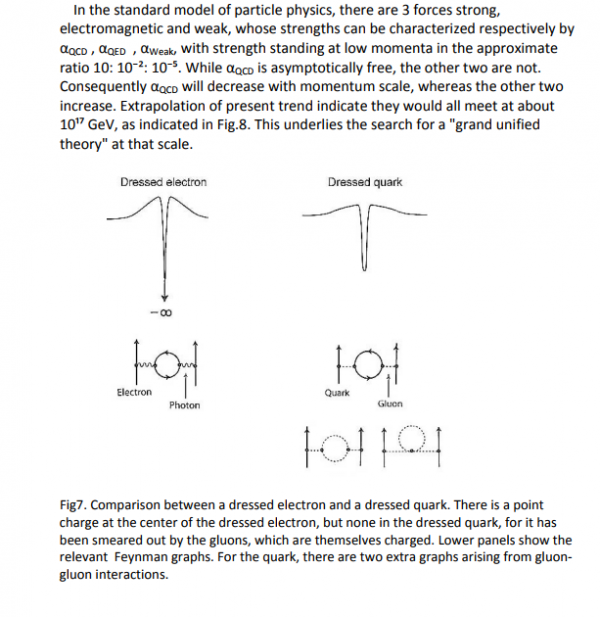Asymptotic Freedom
Why is it interesting?
Asymptotic freedom is a marvelous property from the point of view of perturbative calculability: the coupling gets weaker as one goes to higher energies, and perturbation theory becomes more accurate. Since such theories make sense up to arbitrarily large scales, they have the potential to be truly fundamental.
Feynman, Schwinger, Tomanaga and Dyson set forth the procedure for carrying out this renormalization to all orders in perturbation theory and proved that it yielded well-defined, finite results. Even though this program was very successful many physicists were uncomfortable with renormalization, feeling that it was merely a trick that swept the fundamental problem of ultraviolet divergences under the rug. Furthermore, there was great concern as to the consistency of quantum field theory at short distances. Most four-dimensional quantum field theories are not asymptotically free, so their short distance behavior is governed by strong coupling and thus not easily treatable. In the fifties it was suspected, especially by Landau and his school, that the nonperturbative ultraviolet behavior of QFT meant that these theories were inherently inconsistent, since they violated unitarity (which means that the total sum of probabilities for the outcomes of measurements of some physical processes was not unity). This is probably the case for most non-asymptotically free theories, which are most likely inconsistent as complete quantum field theories. The discovery of asymptotic freedom, however, has provided us with theories whose ultraviolet behavior is totally under control.
The triumph and limitations of quantum field theory by DAVID J. GROSS
Layman
Student
Researcher
- Common Question 1
- Common Question 2
Examples
- Example1
- Example2:
